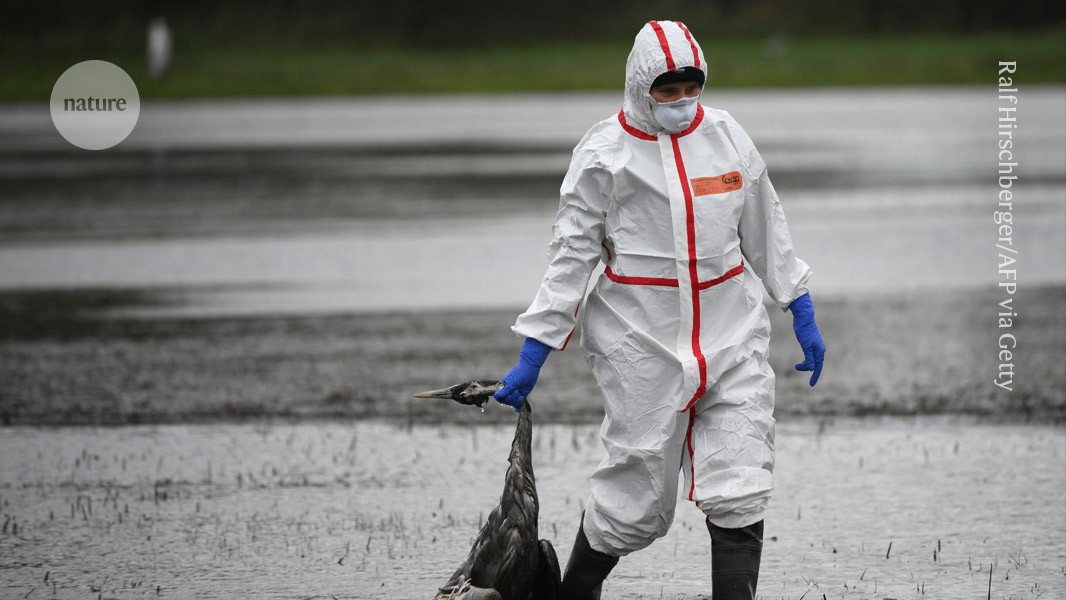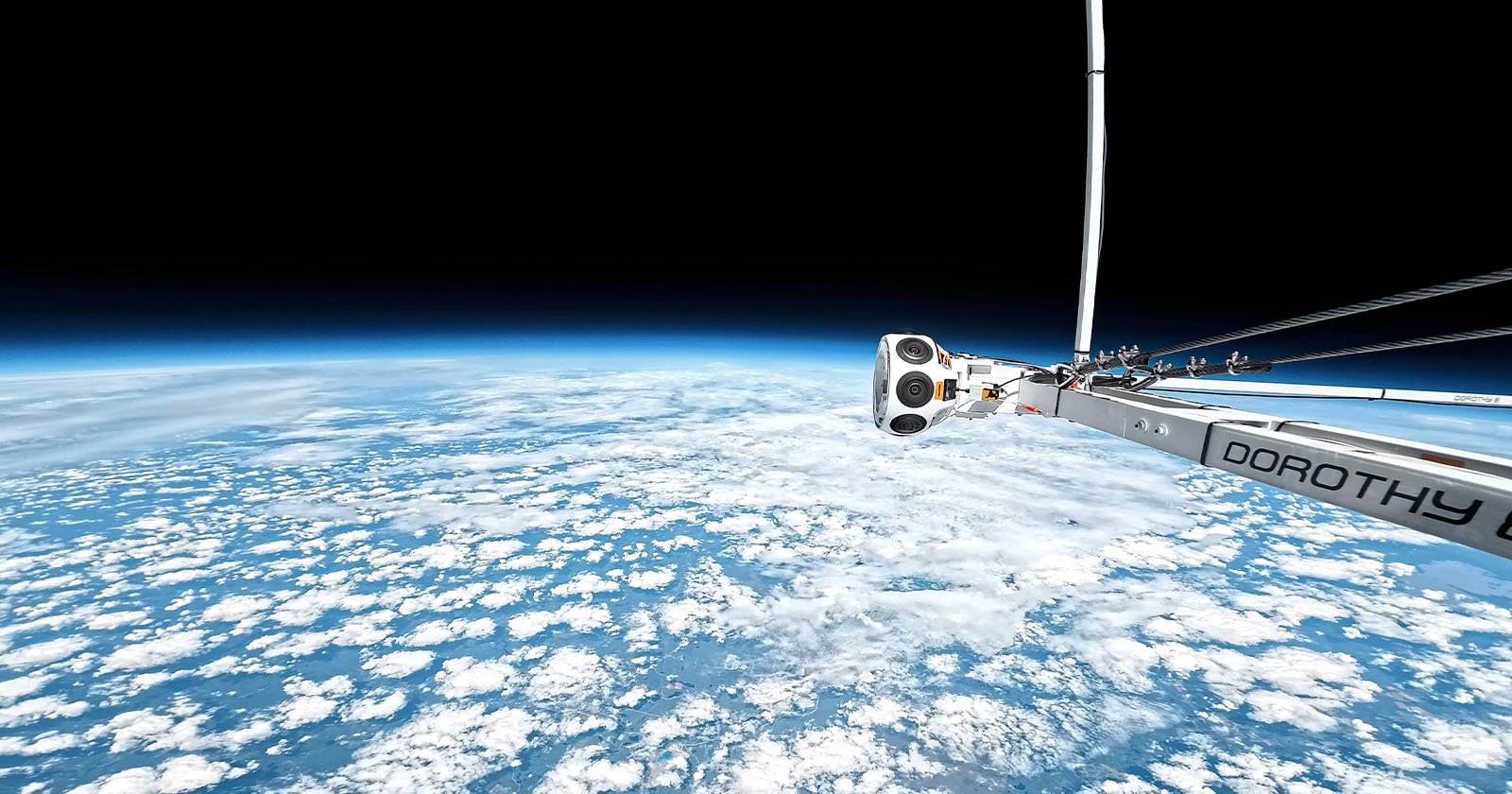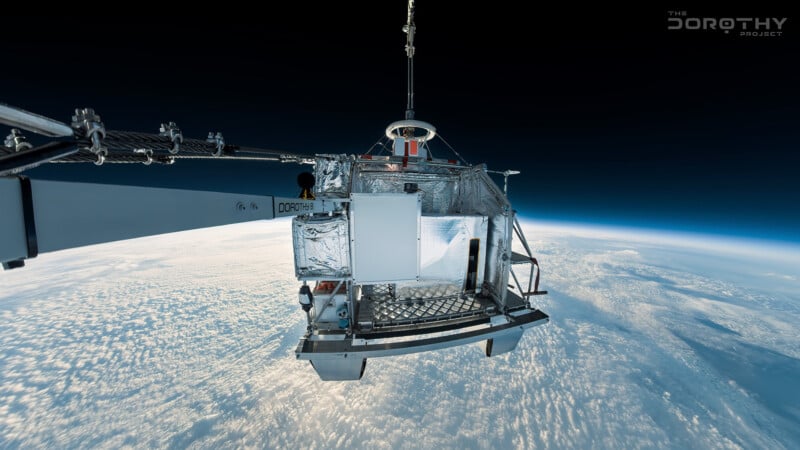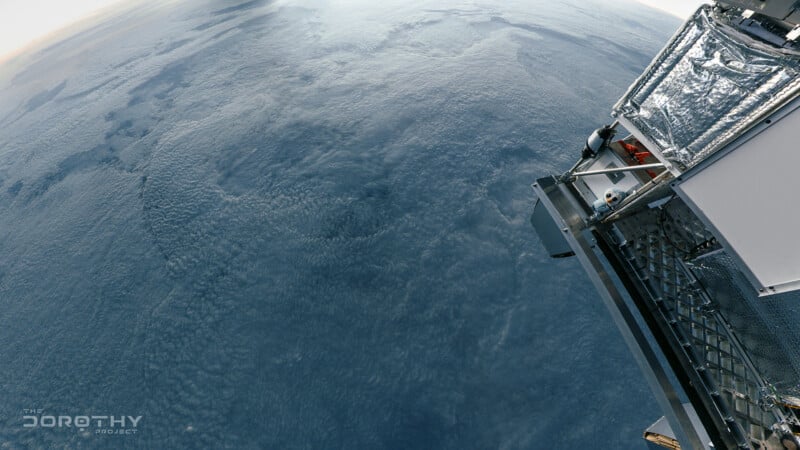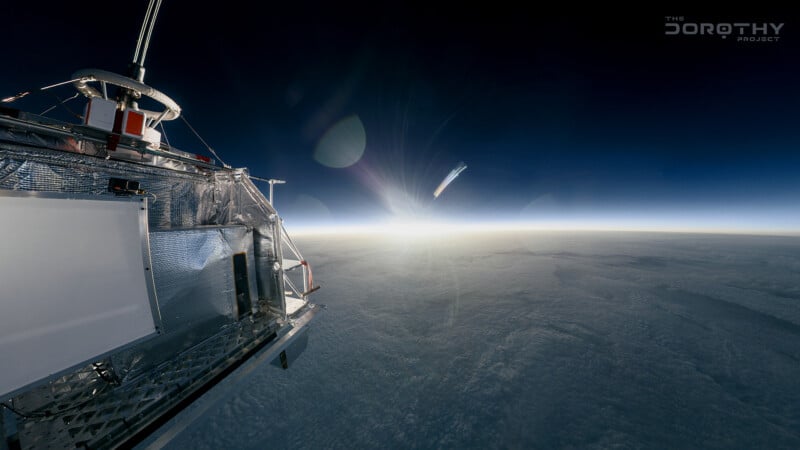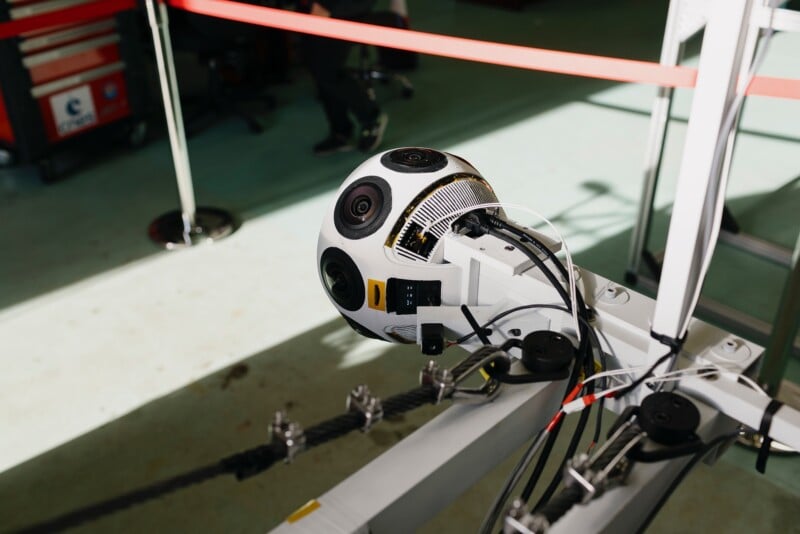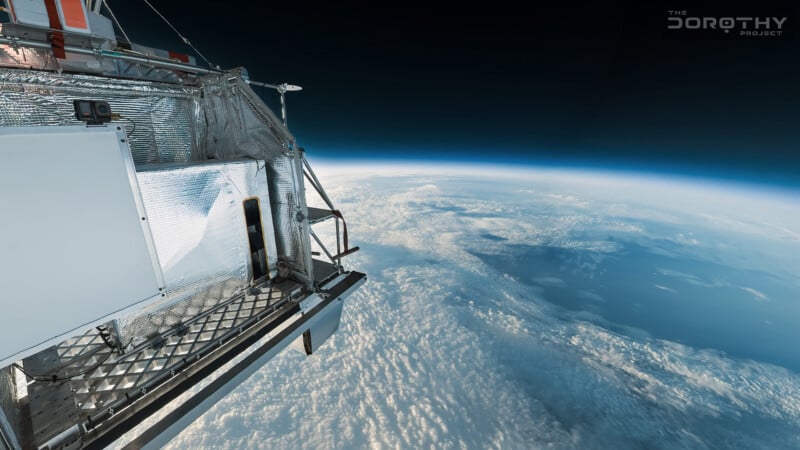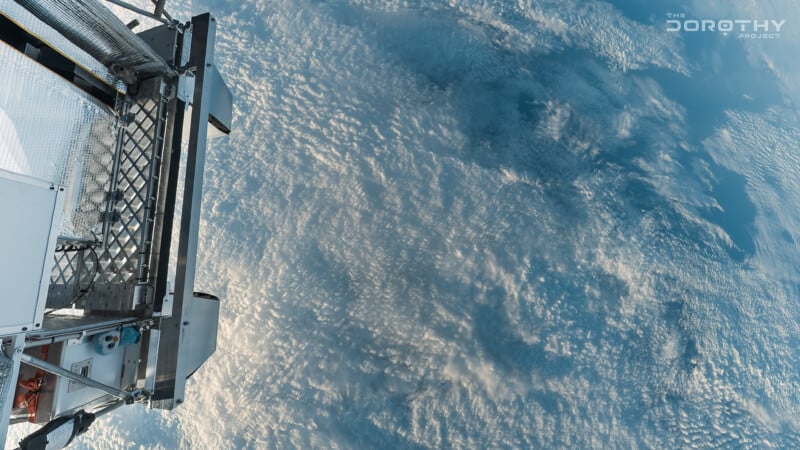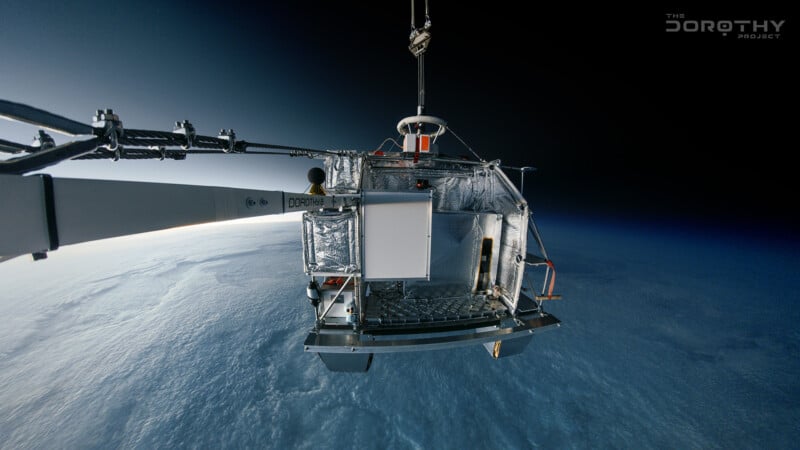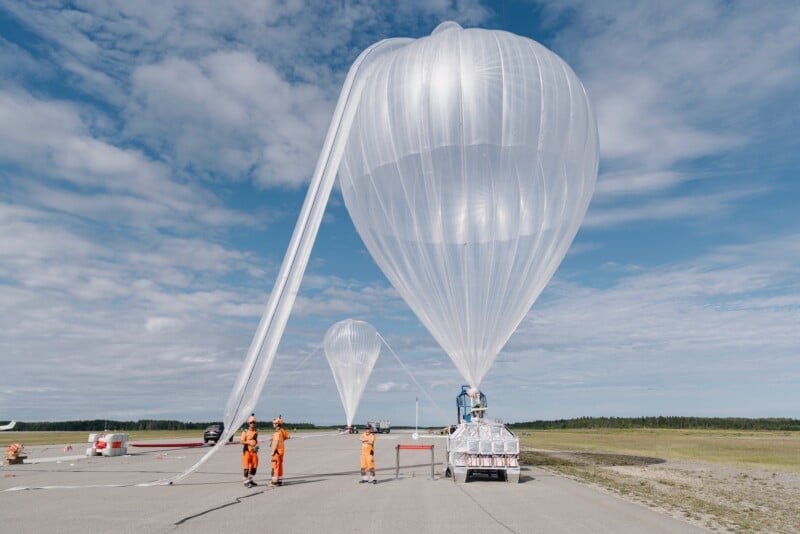A team of scientists and artists sent a modified Insta360 camera to the edge of space, capturing breathtaking images meant to inspire people to reconnect with Earth.
The Dorothy Project teamed up with the Canadian Space Agency (CSA) and the French Space Agency (CNES) to deploy an 11K ultra-high-definition 360-degree camera that captured “some of the most precise images ever recorded” 20 miles above the Earth.
The footage and photos will be used in documentaries and immersive science-fiction films, and will help the CNES to improve its operations. The Dorothy Project was inspired by the concept of the “overview effect,” a profound sense of connection and responsibility toward Earth experienced by astronauts.
The Dorothy 8 rig took eight months of research and development to build. The 24 kg (52 lbs) aluminum structure is capable of withstanding up to 7Gs of force. It is a modified Insta360 Titan that also has two Insta360 X4s attached and one Insta360 Ace Pro 2. It is controlled by dual redundant onboard computers, one seamlessly takes over if the other fails.
“Our programming team developed custom software that lets us control the Titan camera remotely, allowing us to adjust camera settings like brightness, ISO, shutter speed, switch recording modes, and even get a live visual feed during the flight right at the Space Agency’s control center,” Project Dorothy notes in a press release.
The cameras were repainted with the same space-grade coating used on the International Space Station (ISS). This special paint optimizes thermal control in the stratosphere, allowing the camera to handle the extreme temperature difference, a swing of about 120 degrees Celsius (248 degrees Fahrenheit), between the sunlit side and the shaded side.
Dorothy 8 was attached to a 700 kg (1,500 lbs) gondola carrying 10 scientific experiments. The flight lasted 14 hours and reached a maximum altitude of 32 kilometers (20 miles). The main balloon was filled with 150,000 m³ of helium.
Challenges
At 15 kilometers (nine miles) altitude, the camera cut out, and the team had to remotely reboot the device. But a more serious problem happened when the main gondola blocked sunlight getting to the camera for too long, causing it to drop to a critical temperature.
“To warm it up, Loïc, one of our talented programmers, had a stroke of genius: he wrote a tiny looping command that briefly triggered the video acquisition process every few tenths of a
second, making the processor work just enough to slowly heat up,” the Dorothy Project explains. After 15 minutes of digital CPR, the processor temperature climbed back, and the camera came back to life. We could breathe again.”
Image credits: The Dorothy Project
First Appeared on
Source link





